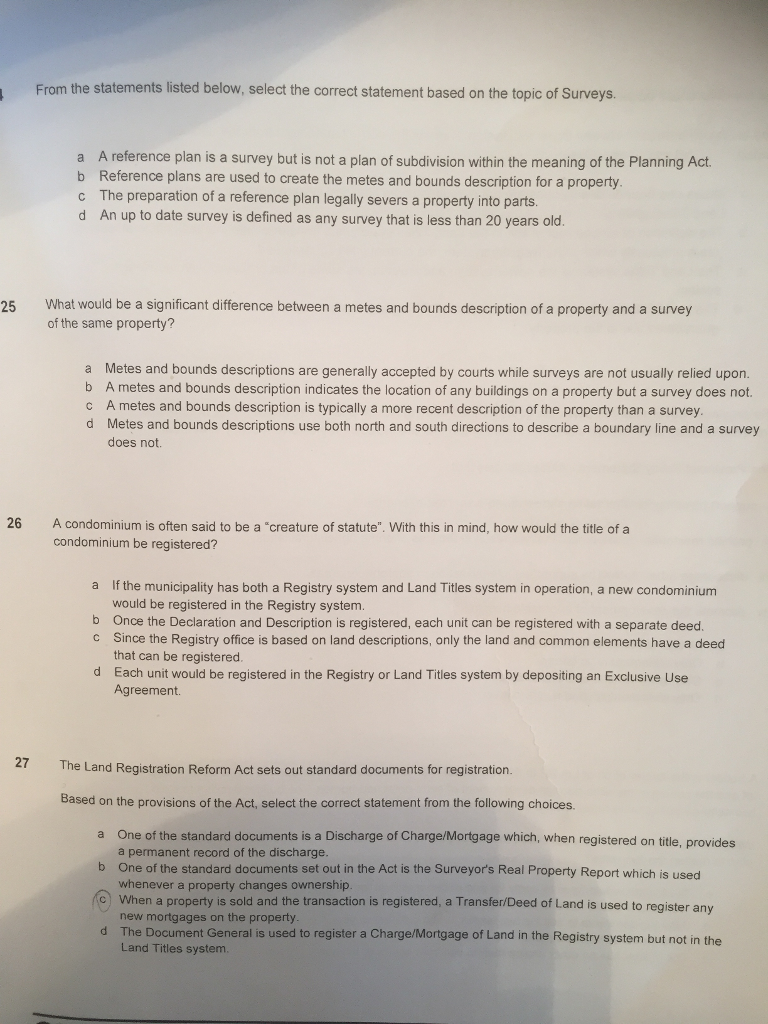
It may include references to other adjoining parcels, and it, in turn, could also be referred to in later surveys. The boundaries are described in a running prose style, working around the parcel in sequence, from a point of beginning, returning back to the same point compare with the oral ritual of beating the bounds. Typically the system uses physical features of the local geography, along with directions and distances, to define and describe the boundaries of a parcel of land. By custom, it was applied in the original Thirteen Colonies that became the United States, and in many other land jurisdictions based on English common law. The system has been used in England for many centuries, and is still used there in the definition of general boundaries. Metes and bounds is a system or method of describing land, real property or real estate. for the line S32E - align your protractor with the circular side facing east).Freebase (0.00 / 0 votes) Rate this definition:

If you're using a semi-circular protractor, orient it so that the circular side faces toward the east or west direction of the call (e.g. Place the center of your protractor on top of the dot, making sure that it is aligned with the grid on your graph paper and that north is on top.This will help you remember that this was your starting point, as well as including the markers which will help you possibly match it up with adjoining plats. Beginning at a white oak in Michael King's line). Next to it write down the description of the corner (e.g. Draw a solid dot on your graph paper to indicate your starting point.If your deed description uses poles, rods, or perches, then divide each distance by 4.8 for an easy conversion. If you plan to overlay your plat onto a modern day USGS quadrangle map, then convert all distances to USGS scale and include them on your chart.Check off each line or corner on the photocopy as you work to help prevent errors.

#Metes and bounds description example full
Transcribe or make a copy of the deed, including the full legal land description.Pencil and paper will work too - just takes longer. Calculator - Doesn't need to be fancy.Pencil & Eraser - Wood pencil, or mechanical pencil - it's your choice.Patricia Law Hatcher, an expert in land platting, recommends "engineering paper," with four to five equally-weighted lines per inch. Graph Paper - Used only to keep your compass aligned perfectly north-south, the size and type of graph paper is really not important.The only requirement is that it is marked in millimeters. Ruler - Again, easily found in office supply stores.

If you plan to do a lot of land platting, then you may want to purchase a round surveyor's compass (also known as a land measure compass), available from specialty supply stores. Protractor or Surveyor's Compass - Remember that half-circle protractor that you used in high school trigonometry? This basic tool, found in most office and school supply stores, is an easy-to-obtain tool for land platting on the fly.


 0 kommentar(er)
0 kommentar(er)
